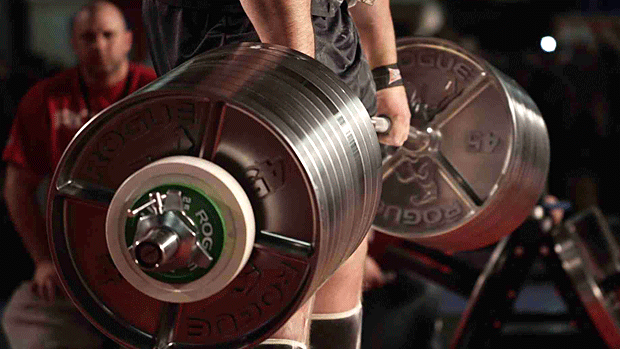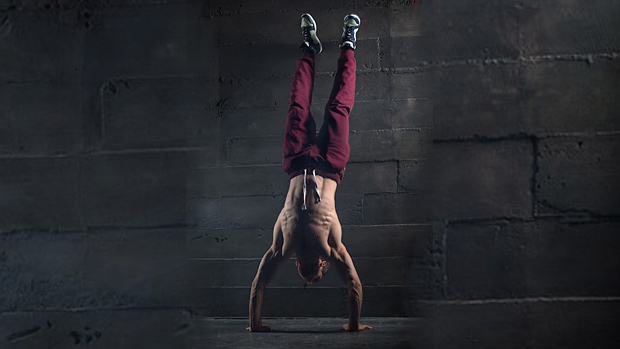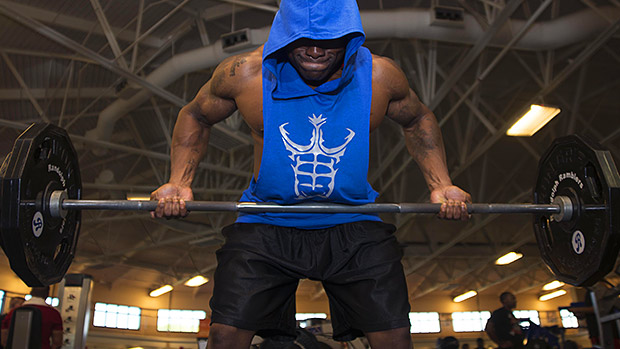Most lifters care about grip strength, but few ever think about hand health, at least not until one or both of them starts to hurt. The goods news is, you can have it all – a strong grip and powerful forearms, and resilient, injury-proof hands, fingers, and wrists. Here's how.
The fingers are capable of flexion, extension, abduction, adduction, circumduction, opposition (thumb), and reposition (thumb). Flexion of the fingers happens when you curl them. When you grab a bar to do a bench or a deadlift, your fingers are in flexion. If you were to open-hand slap someone, that would be extension of the fingers. Trying to palm a basketball involves finger abduction.
If you ever saw Terminator 2, every time the T-1000 turns his whole arm into a giant blade, his fingers adduct. Circumduction is the act of moving a given finger in a circle. Opposition is the act of touching the pad of your thumb to one or all the rest of your fingers. Reposition is merely returning the thumb to its resting place.

Your wrist is capable of four motions: flexion, extension, ulnar deviation, radial deviation, and also circumduction (a combo of the previous four done clockwise or counterclockwise).
The Exercises
Experienced lifters know that for every push you must do a pull, but that balancing act also goes for the wrists and hands. If you're a bodybuilder or powerlifter, you spend the majority of your time with your fingers in flexion. Benching, deadlifting, pull-ups, cable machines, curls, and the like are all finger-flexing movements. Here are some exercises you can do to balance out these motions.
Yes, the old school push-up is great, but there are a few ways you can modify it to increase the health of your hands.

These are the same as normal push-ups, except here you spread your fingers wide.

Start at the "up" end of the push-up with your hands flat on the ground, then simply flex your wrists which forces you higher off the ground. As you hyper-extend the fingers, you'll be putting all the pressure on them. If this is new to you, do them against a wall to lessen the pressure. Ease into this. When you want to make it even more difficult, do a regular push-up and go into a wrist flexion at the end. This will take time. Don't rush it.

Start with the backs of your hands on the ground or wall. As you push yourself up, extend your wrists. At the end of the motion you'll be on the backs of your fingers and your wrists will be straight. Start against a wall and build your strength up so that you can perform it on the ground.

A key point here is to make sure you evenly distribute your weight on all your fingers. Don't put your thumb in any compromising position; just spread your fingers out and lower yourself to the ground. This works the finger extensors in a position where they can get super strong.
These variations have an added bonus beyond training the extensors of your hand – they help you feel your lats when you're pressing.

These are best done with a kettlebell, but a weight plate will work. Hold the weight just like a server at a restaurant holds a tray and then reach skyward. If you go heavy enough, you'll feel that lat pulling your scapula down, too.

Similar to the waiter press, but you'll need to use less weight. If you're a strong guy, start with a 25-pound plate. If you're a strong gal, use a 15-pound bumper plate.
These variants are of the one-handed variety but will carry over to your full deadlifts.

The vertical bar is a specialty item, so if you don't have one, you can use the broken end of a barbell, or even a loading pin. Once you load it with some weight, chalk your hands up. Grab the bar and stand up with it. This particular lift trains the wrist in ulnar deviation and as it gets heavier, the bar will want to twist. Don't let it twist.

Take two 25-pound plates and sandwich them together, pinch the crap out of them, and stand up. If you can't handle that weight, use three or four 5-pound plates to start. This can also be done two-handed, as pictured. If you do it that way, start with two 35-pound plates and work up to the 45s.

If you can do these with a 45-pound plate, you're pretty much a badass. Suffice it to say, start with a lower weight. Try a 25-pound plate. The part that makes it tougher is overcoming the leverage. You can curl a 25-pound plate with some practice, but a 25-pound bumper plate will be considerably more difficult because it's thicker. You can also do these two-handed.
There are a few ways to go about training your hands. Option one is to do your fat bar lifting, pinching, and gripper work on a dedicated day, preferably the last day of the week before you rest. Your hands have a lot of connective tissue and the time it takes to strengthen that tissue, as opposed to your actual muscle tissue, is longer. You need to rest it after an intense day of grip work. As you become proficient, you'll become more resilient.
On your other days, you can pepper in these specialty exercises, either before or after your main lifts. If you're working shoulders, you can throw in a set of fingertip presses with the plate as a warm-up to your usual shoulder pressing, or do it after your main lifts. The same goes for deadlift day. Throw in some pinching before or after. Or, if you want to lift big numbers in the pinch, use it as a deadlift variant for the day and see how far you can take it. Wrist work can be done as a warm-up on any push or pull day.
These variations aren't the only things you can do. You can do all sorts of rows, dynamic movements, and if you have the will and the time, you can do a pinch pull-up. The latter is a feat few have done. The limiting factor is your creativity, but whatever you do, don't let your hand health be an afterthought.





